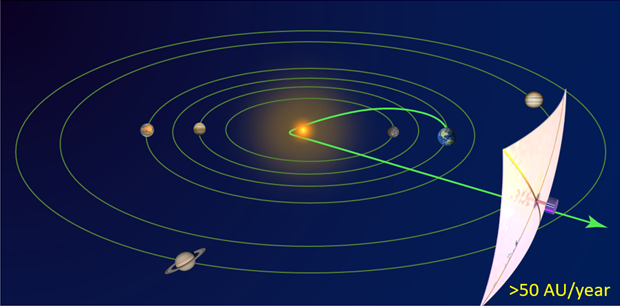Space agency NASA has announced selection of seven concepts for future space exploration—and they include some exceptionally creative ideas. Among these is Artur Davoyan’s concept of breakthrough space exploration with CubeSat solar sails.
Space missions take decades of development, years of flight and cost billions. So why not explore the solar system and interstellar space using CubeSat solar sails? Proposed by Artur Davoyan, an assistant professor at the Mechanical and Aerospace Engineering Department, this research project will examine structurally sound methods for supporting the sail and study ultra-lightweight metamaterials.
It’s thought that super-light CubeSat solar sails could travel 60 times the Earth-Sun distance in a year, which is 20 times the velocity of Voyager 1—currently the farthest spacecraft of all—and could reach Jupiter in five months. That journey currently takes five years.
Davoyan and his team, which includes Marco Velli (UCLA’s Earth, Planetary and Space Sciences Department), Les Johnson (NASA Marshall Space Flight Center) and Henry Helvajian (The Aerospace Corporation), receive $500,000 to advance materials, spacecraft architecture, and conduct mission study. The project is part of a highly competitive NASA Innovative Advanced Concepts (NIAC) program.
Parts of the text are from https://www.nasa.gov/press-release/nasa-selects-innovative-early-stage-tech-concepts-for-continued-study
https://gizmodo.com/nasa-funds-interstellar-probe-and-space-habitats-made-f-1846676870
Figure caption: By spiraling in toward the sun, multiple low cost solar sail spacecraft may be placed on arbitrary ultrafast trajectories through the solar system to the great beyond.

